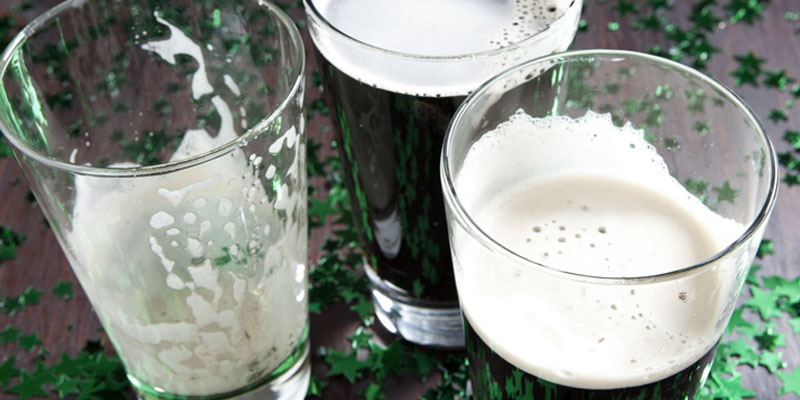Lipstick leaves lip stains, wine has legs, and beer gets lacy. You may have heard of beer lacing while eavesdropping on the plaid-wearing man with a mustache behind you at the craft beer bar. You then proceeded to ignore everything that came out of that person’s mouth, probably. If you’re curious, beer lacing is a real thing, but don’t fret; it says little about the quality of your beer.
Lacing is the residue left from the foam beer head as you drink your beer. The foam is all at the head with a full beer, then with each sip, the head moves down the glass a bit. Some residue from the head stays at each section of the glass that the head rests at. The slower you drink a beer with a healthy head, the more lacing you’ll see.
There are two major factors that determine the laciness of your beer: the type of beer and how clean your glass is.
The most famous beer for lacing is Guinness, a nitro stout. The thick nitro head leaves a distinctive mark at each point you drink the beer down to, and it’s become a definitive part of the Guinness drinking experience. Other beers that could result in impressive lacing are IPAs, other nitro stouts, some lagers and ales, and any beer with a noticeably high hop level. It varies beer to beer, regardless of style.
The type of beer doesn’t matter at all if the glass isn’t clean, though. A head of beer (therefore the lace) loves a well-rinsed glass. Lipstick, chapstick, any grease or fat, and residual soap will kill or severely hamper the head formation. Beer glasses that are thoroughly hand-washed and air-dried are best.
When it comes down to it, lacing adds more to aesthetics than anything else. Don’t worry if your beer isn’t lacing unless you know that it’s supposed to be. In that case, you might want to double- check the cleanliness of your glass and your bar in general.

